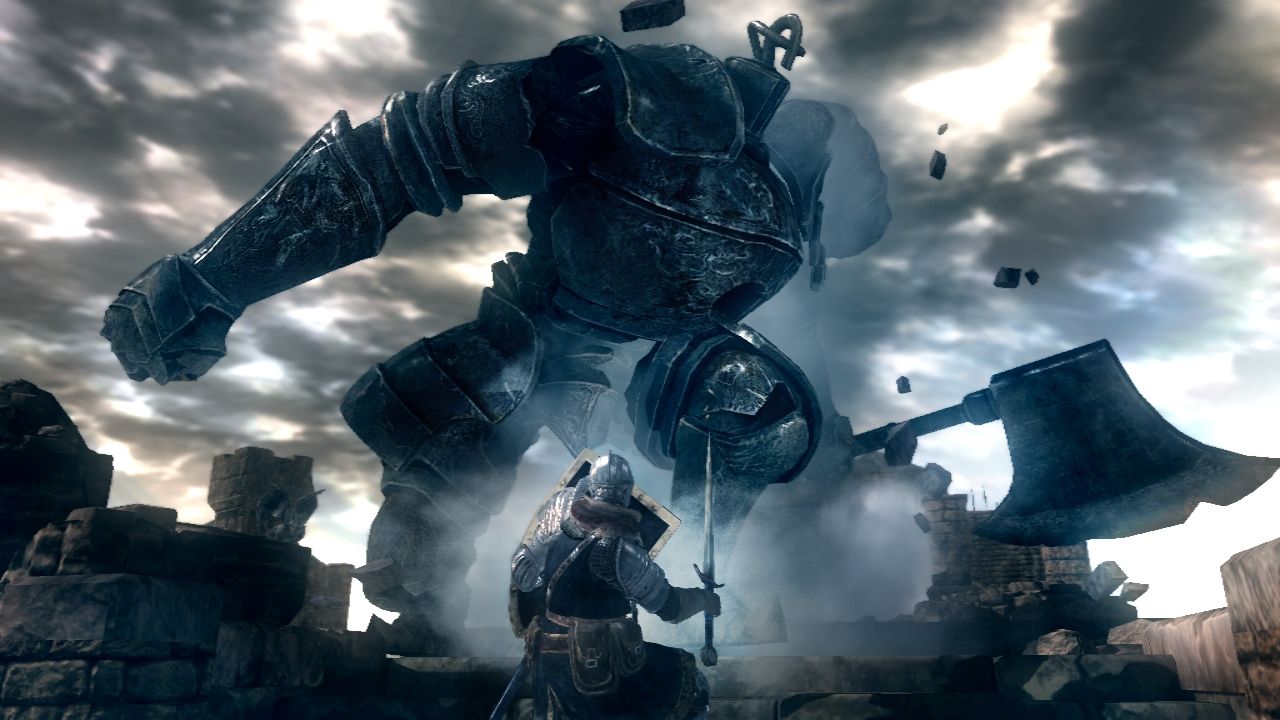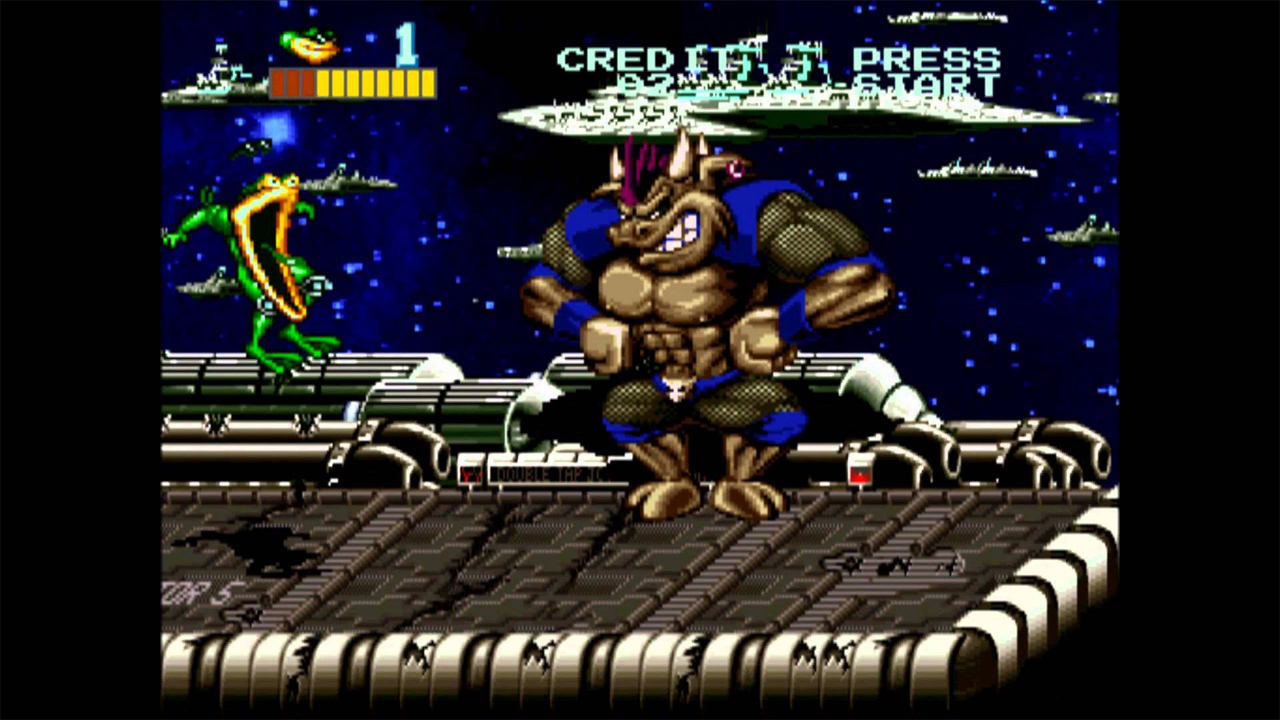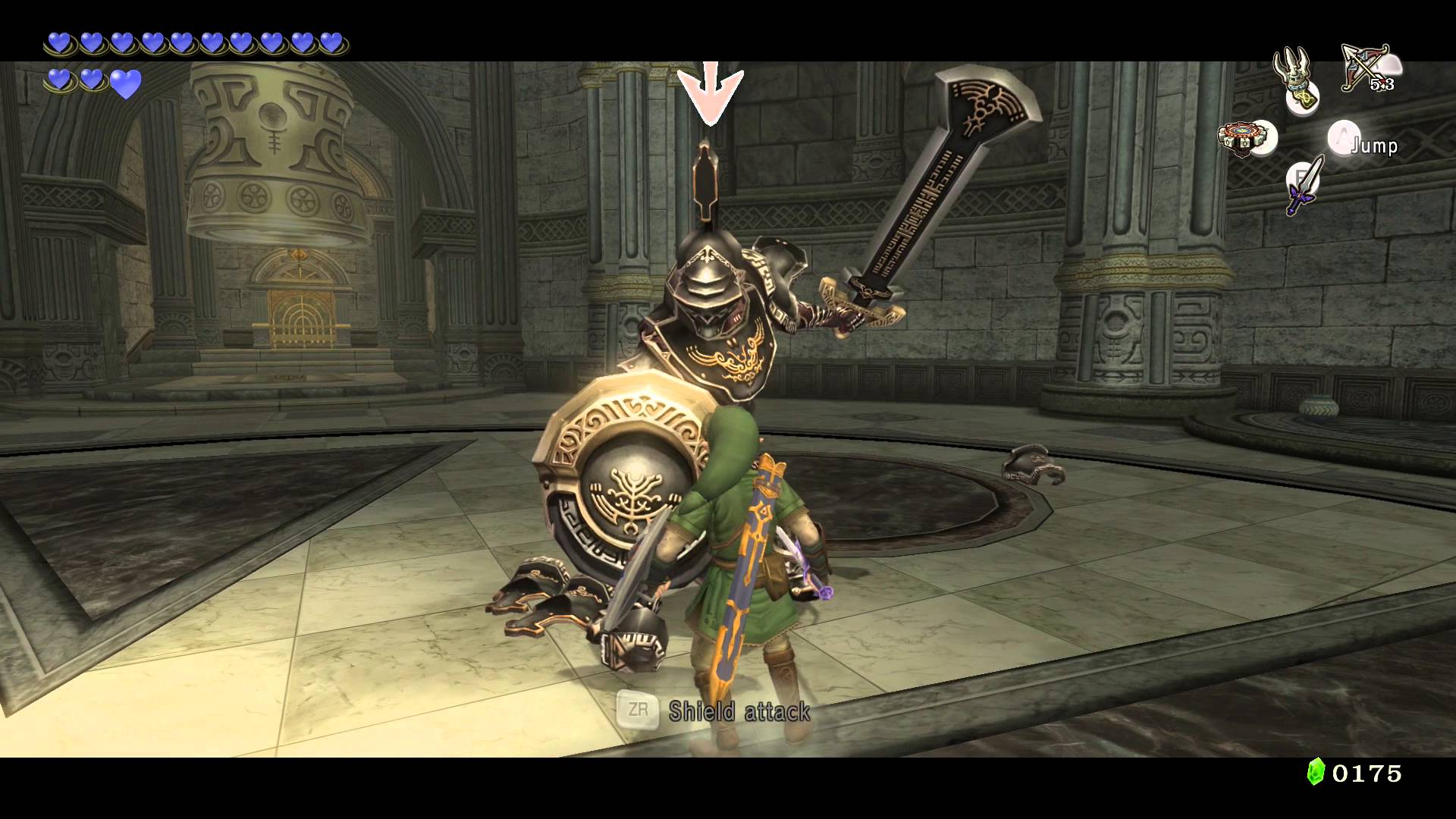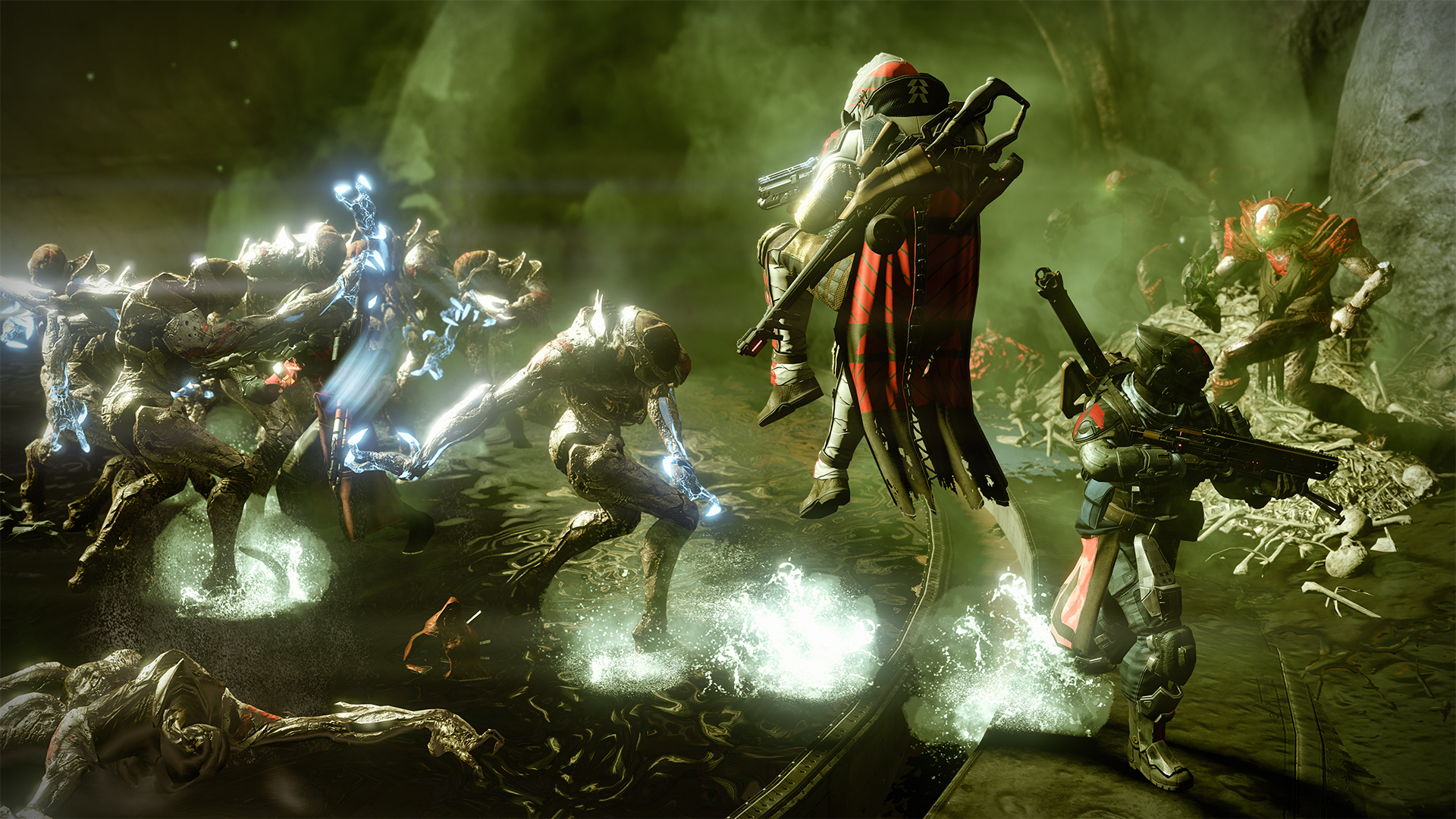7 golden rules for building a better boss fight in 2016

Boss fights have existed almost as long as games have. As old and hoary a tradition as ‘Press start to play’ and ‘Game Over: Continue?’, they’ve nonetheless stuck around with more resilience than some of their now anachronistic contemporaries. Barely any game has a lives system any more, but the bosses that used to deprive you of so many of those resurrections haven’t gone anywhere.
But if they’re going to remain – and they arguably should, because the right boss fight, executed in the right way, in the right place, can turn a game from great to legendary – they need to keep evolving. They’ve changed a lot over the years (though some much more than others), but they need to change still, as game styles, tastes, and technology develop. So I think it’s time to take stock, in the context of gaming in 2016, of what a boss fight can and should be, and how they can continue to add vital highs and rewards to the games they grace without becoming dinosaurs.
Though of course they can still be literal dinosaurs. Dinosaurs are great.
A boss fight should recap what you know, and teach you more about the game
Let’s start with the fundamental point of boss fights, because it’s not what it was. Back in the old days, when games lived in imposing black pillars in a special ritual testing chamber – also known as an ‘arcade’ – they just wanted to make money out of you by being really hard and tempting you to pay your way to the end. Bosses were a fundamental part of that. They were big, blunt objects – though often quite spikey as well, and/or on fire, and/or made of slime – that existed only to ensure that if the difficulty of the preceding level didn’t get you, then the big, bastard-shaped lump of deliberately unfair Fuck-You at the end would. They were enforcers working for the game-world’s bad guys, yes, but in a very real sense they were also bouncers acting on behalf of the game’s publisher.

Now though, things are different; in fact they work in almost entirely the opposite direction. We buy games upfront and expect long-term, progressively gratifying experiences. Bosses still have a place, but their role is reversed. They should still represent landmarks in our journey, but rather than beating us down, they should raise us up and push us further along. They should not be easy. They serve no purpose if they’re easy. But the challenge they deliver should be educational, not punitive.
They should recap the skills we’ve learned so far, in a slightly elevated fashion, and show us new ways of using them, even if only by way of a tighter, more demanding shake-down to make us realise just how on-point we can be. In short, we should leave a boss fight invigorated and excited about the possibilities ahead. We should not be relieved that it’s over. We should be empowered by what we now know, and that should serve as an evolved foundation for the next area of the game.
There are several factors that can play into making this work. The first of which is to…
Weekly digests, tales from the communities you love, and more
Make it a duel
If not literally, then in its essence. Not every boss fight needs to consist of two characters going at each other with swords. But the best boss fights do play out as a direct battle of skills and wits between human and AI. If they don’t do that, if they lack that testing purity, then they’ll rarely deliver the qualities I was talking about above.

Boss fights used to be typified by a mechanical, prescriptive simulation of a back-and-forth battle. The boss winds up a set sequence of attacks while giving you a quick hint of which one it will be. You dodge it. Then you get a window through which to throw your own barrage of hurt. Repeat. Repeat again. Boss fight ends. It was challenging, but really no more of a dialogue than a round of Dance Dance Revolution. You do the things when told, you win, you move on. But we can do better now. More powerful tech and modern game design insight allow for much more nuanced interactions. Boss fights can be genuinely reactive battles for opportunity, each new ‘in’ only as distant as your awareness and creativity allows.
There’s a reason that the Darknut sword duels are some of the most satisfying boss fights in the Zelda series – and it’s no coincidence that they play out as extreme versions of the game’s standard duel-based combat, elevating and re-teaching the core gameplay. Nor is it a coincidence that Dark Souls’ celebrated boss fights are full of discoverable, organic opportunities for attack and evasion, a nature compounded by the way the game remains open to radically different character builds throughout. Boss fights need to test the player, but they need to test the player holistically, beyond simple reactions and their prowess in the area of pattern memorisation.
And leading on from that, boss battles can also be made even better if they…
Allow solutions other than direct attack
If we’re going to erase the sense of ‘gamey’ artificiality as far as possible, it’s also a great idea to add different victory conditions, if feasible. If the player can find ways to win beyond straight combat, then the boss immediately becomes part of a more living, game-wide ecosystem. No longer will they feel like an isolated set-piece, locked away in a special room, and what’s more, the player’s sense of what’s possible in-game will be yet further expanded.

Dark Souls' fights are full of environmental advantages for those willing to look and experiment. Destiny’s cheeses might technically be cheating, but a few of them have leveraged legitimate creative thinking by players, far beyond the planned constraints of the game’s systems. Deus Ex has always thrived on offering different approaches to each objective (though obviously Human Revolution screwed up in regards to its actual bosses). And Metal Gear Solid 3’s legendary fight against The End – in which you can just wait out the aged sniper until he dies – is a masterpiece of the technique.
But when you are going for direct confrontation, you should…
Make it about intelligence, not just brute-force difficulty
There are more interesting, more rewarding ways to defeat a boss - even one you’re meeting dead-on - than by simply throwing aggression at it until it’s dead. Take Alien: Isolation, for instance. In a way, Creative Assembly’s wonderful, immersive horror simulation can be seen a one long boss fight, the almost ever-present Alien a constant, intimate threat and your unpredictable tangling with it shaping the majority of your passage through the game. But the nuanced layers of cause and effect at the centre of those interactions set them above and beyond almost any other video game encounter I could mention.

Isolation wouldn’t have been nearly as enthralling if dealing with the Alien had been a traditional case of keeping quiet and hiding. But the sheer scope of the player’s relationship with it – and it does become a real relationship as the game progresses – by way of evasion, misdirection, improvisation, manipulation of secondary AI and environmental features (and good, old-fashioned running away) exemplify every point I’ve made in this article so far, and then some. Obviously A:I is a special case, and a huge, very specific technical achievement, but the lessons it teaches can surely be scaled down and applied to more transient, creative encounters.
Right, we’re nearly there. Just a couple more minor points to hit now.
Hitboxes, people, hitboxes
Hitboxes – the invisible markers around characters and objects that detect a hit when they clash – are important. A combat-driven encounter might seem to be built solely on different types of attack, defence, and evasion, but the nuance that hitboxes add to the way things play out – say, how close you can get to an enemy ship or bullet without crashing – is what really dictates how hard, easy, fair or cheap a battle is. A good hitbox can make a player brave enough to try all kinds of heroic, experimental tactics. A bad one will force them to err on the side of caution, for fear of being caught out.
Watch the above GIF (via mlpdownthedrain on Imgur) for an example of how good they can be. The tight hitbox there is fundamental to the player being able to pull off stuff like that, and crucially, being willing to try.
Go easy on the mobs
This one is partly a point of personal preference, and certainly not a hard-and-fast rule – in co-op games like Destiny, the strategic doling out of different responsibilities across a team can be really rewarding, and even back in 1993, Doom was doing a great job of turning multiple different attacking classes into a kind of combat puzzle – but if a game is thinking of simply bolstering the difficulty of a boss fight artificially with a few waves of standard grunts, it’s often best that it doesn’t. Used without finesse, as it often has been, it’s a cheap, lazy tactic for boosting the challenge of a boss battle, and there are far more interesting ways to achieve that.

And finally…
Consider whether your game actually needs boss fights at all
Because you might very well not. If it’s a fighting game, or a third-person, combat-driven affair, then go nuts. But if the game in question has more of a narrative bent – even if it’s an action game – then often it will be better served with dramatic peaks and troughs served by story, pacing and set-pieces.
Basically, learn from BioShock’s mistakes, is what I’m saying.



